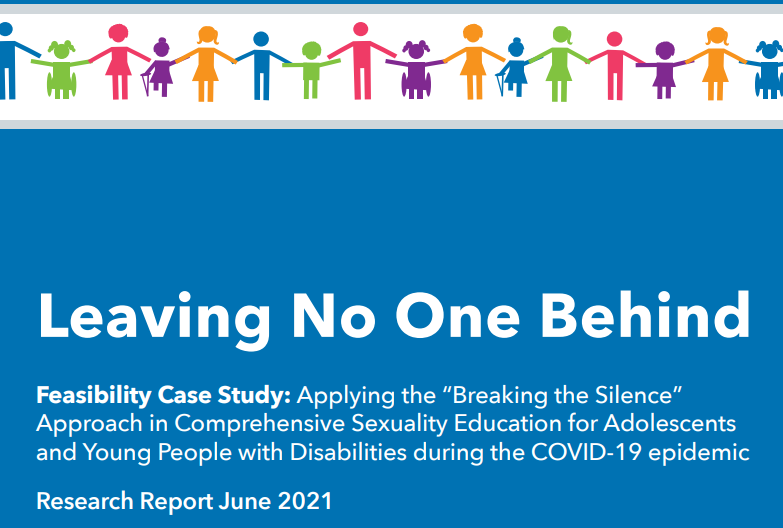Leaving No One Behind Feasibility Case Study: Applying the “Breaking the Silence” Approach in Comprehensive Sexuality Education for Adolescents and Young People with Disabilities during the COVID-19 epidemic

Leaving No One Behind Feasibility Case Study: Applying the “Breaking the Silence” Approach in Comprehensive Sexuality Education for Adolescents and Young People with Disabilities during the COVID-19 epidemic
Young people with disabilities have the same sexual and reproductive health needs and rights as their peers without disabilities. However, evidence in eastern and southern Africa shows that, compared to their peers, they are more vulnerable to HIV, unintended pregnancies, sexual violence and lack equal access to health care and information about their sexual and reproductive health rights (SRHR). Comprehensive Sexuality Education (CSE) is an important factor for young people with disabilities and enables them to claim their sexual and reproductive health and rights. Yet educators for these learners in and out of schools often lack the skills, confidence, methods, and resources to provide CSE in accessible formats. Additionally, negative perceptions linked to the sexuality of young people with disabilities drive a risk-protection approach, that favours abstinence and no sex messages instead of comprehensive information about the body, relationships, safer sexual practice, rights and rights protection.
View the complete Leaving No One Behind Feasibility Case Study: Applying the “Breaking the Silence” Approach in Comprehensive Sexuality Education for Adolescents and Young People with Disabilities during the COVID-19 epidemic Report
